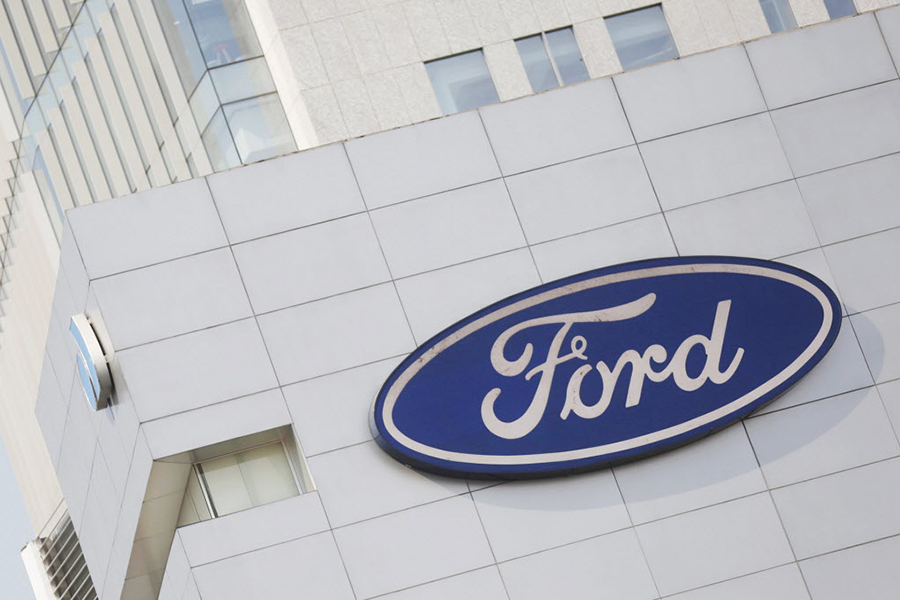Ford takes to social media to defend itself against Trump's debate remarks
Loading...
A nontraditional fact checker was on social media during and after the presidential debate Monday night.
Ford Motor Company and its employees took to Twitter and Facebook to defend themselves against Republican candidate Donald Trump’s opening comments about the company's investments and production plans in Mexico.
Throughout his campaign, Mr. Trump has brought up Ford’s investments in Mexico to deride the North American Free Trade Agreement (NAFTA) and highlight the decline of US manufacturing. Only recently has Ford started to jab back.
But the argument isn't as black-and-white as either side has depicted it. Ford’s move of its small-car production to Mexico is part of a larger trend of American automakers sending some of their production across the southern border, as labor forces in the Northeast and Midwest shrink and age.
Trump brought up Ford and Mexico in his opening comments to start the debate against his Democrat opponent, Hillary Clinton.
“So Ford is leaving. You see that their small car division [is] leaving. Thousands of jobs leaving Michigan, leaving Ohio. They’re all leaving. And we can’t allow it to happen anymore,” said Trump, who has promised to slap a 35 percent tax on cars, trucks, and parts produced there and shipped here, according to Fortune.
Ford immediately started to fire back. Employees, including high-ranking engineers, attempted to fact-check on Twitter and Facebook. The Dearborn, Michigan company also posted a graphic with statistics on Twitter during the debate.
A Ford spokesman elaborated in an email after the debate, explaining that Ford has more hourly employees and produces more vehicles in the US than any other automaker, according to Fortune. Ford employs 85,000 workers here in the US.
But the automaker does plan to move all of its small-car production to Mexico over the next two to three years, Ford Chief Executive Mark Fields confirmed earlier this month. Ford already produces its Fiesta, Fusion, and Lincoln MKZ models in Mexico, and plans to move the Focus and C-Max there too when it builds its $1.6-billion plant in San Luis Potosi, Mexico.
In a labor contract it ratified with the United Auto Workers (UAW) union in November, Ford agreed to manufacture high-profit SUVs and pickup trucks where the Focus is now assembled in Michigan. Its current plan is to hire 488 professionals, according to The Wall Street Journal.
Ford isn’t alone in its move over the border. Several automakers, including General Motors, Volkswagen AG, and Toyota, have set aside billions of dollars to upgrade or build new factories in Mexico, according to the Journal.
In addition to this trend, American automakers have been reluctant to build new facilities, according to the Journal. Instead, they have opted to upgrade and expand existing facilities.
UAW President Dennis Williams agreed last week with Trump’s proposal to slap American automakers with a 35 percent tariff on cars built in Mexico, even though the union supports Mrs. Clinton for president. The union, which represents thousands of Ford’s US hourly workers, has long criticized Ford and other US auto companies for exporting jobs outside the country. It also opposes NAFTA, arguing automakers should cut costs, not export jobs.
But Conor Sen, a Bloomberg columnist, wrote Monday that Mexico and its labor force have been a boon for the United States.
Hispanics have accounted for 5.9 million of the 13.6 million workers who have joined the workforce since the end of the Recession in 2009, wrote Mr. Sen. Mexico is the largest country of origin for Hispanics in the US, although more Hispanic immigrants have left the country than arrived since 2009. The rise in the Hispanic labor force comes as the Northeast and Midwest, including Michigan, suffer from a shrinking and aging workforce.
“The choice is between importing workers to fill the labor gap or exporting some work, as Ford has done, to free up dwindling workforces to do other tasks,” writes Mr. Sen. “Why is Mexico providing such an important part of the US economy's workforce – both inside the US and south of the border? Because it's one of the few countries in the world with the demographic and geographic profile to support the labor force needs of a country as large and dynamic as the US.”







